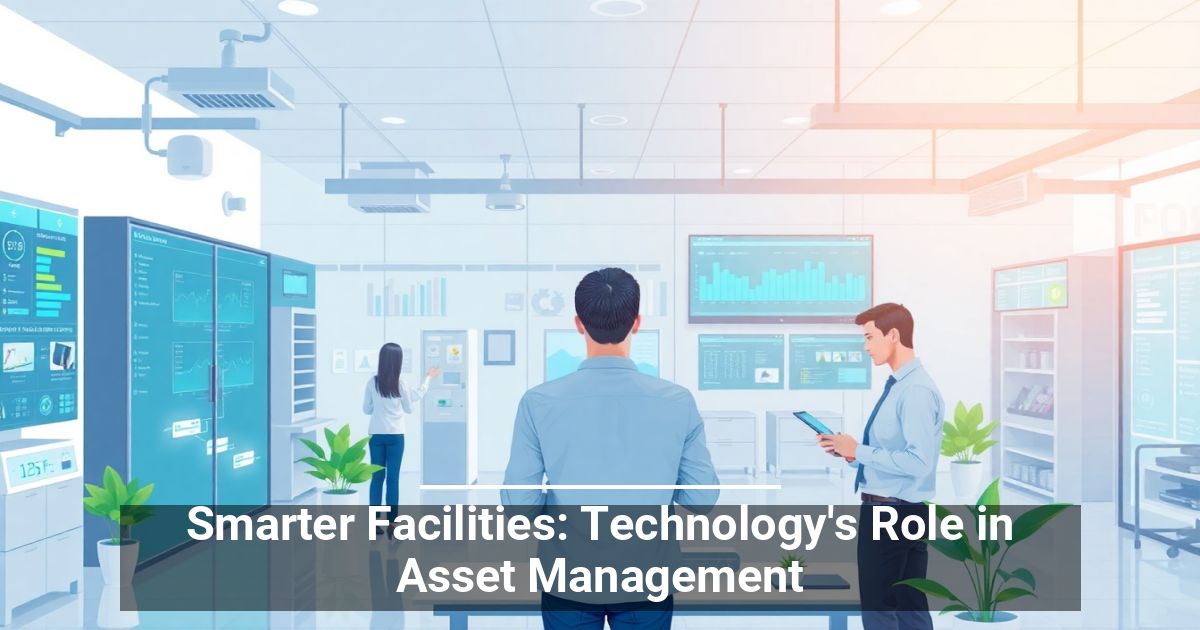 Managing a facility is more complex than ever. Between monitoring equipment, scheduling maintenance, meeting compliance requirements, and managing sustainability goals, facilities managers face mounting pressure.
Managing a facility is more complex than ever. Between monitoring equipment, scheduling maintenance, meeting compliance requirements, and managing sustainability goals, facilities managers face mounting pressure.
The good news? Technology in asset management is helping businesses stay efficient, cost-effective, and one step ahead of problems before they become expensive emergencies.
Why Manual Methods Are Holding You Back
Spreadsheets and reactive maintenance have long been the standards, and a decade ago, they worked fine for keeping things running (at least most of the time).
Today's facilities demand more innovative approaches. Modern buildings house sophisticated equipment that requires constant monitoring and maintenance. Without smart technology in facility management, you're likely to spend more time (and money) playing catch-up and responding to breakdowns rather than preventing them.
The Shift to Predictive Maintenance
Traditional computerized maintenance management system (CMMS) software helped organize work orders and track repairs; however, newer technology solutions for facility managers can predict problems before equipment fails.
By connecting IoT sensors to machine learning algorithms, these systems can alert you before a critical failure occurs. This predictive approach moves you from "fix broken things" to "prevent broken things," a shift that delivers serious ROI. Understanding the role of IoT in asset management is crucial for implementing effective smart asset management strategies.
What does that look like in practice? It's HVAC units that alert you when energy consumption patterns indicate an impending failure, and security systems that automatically adjust to occupancy levels. It's also sensors that track equipment performance in real time, identifying inefficiencies that drain your budget.
Technology Solutions Worth the Investment
Are you trying to decide which technology solutions for facility managers represent the best investment? These tools are proving their value:
- Smart sensors and IoT devices that monitor equipment health, demonstrating the role of IoT in asset management
- Mobile CMMS applications that keep maintenance teams connected and responsive
- Digital twins, or virtual models of your facility that let you test changes before implementing them
- AI-powered space utilization tools for optimizing real estate costs with actual usage patterns
- Energy monitoring systems that identify waste and support sustainability initiatives
Each solution addresses a specific pain point while contributing to smart asset management strategies.
Addressing the Hidden Challenges
Of course, smart technology in facility management isn't a magic fix for every problem your business faces. Success with the digital transformation of building management requires addressing three often-overlooked challenges:
- Integration. Many facilities operate multiple systems that don't communicate, so it's critical to ensure that your technology stack works together effectively.
- Change management. Your team needs training and support to trust and effectively use new tools.
- Data security. Every connected device is a potential vulnerability. As facilities become increasingly intelligent, cybersecurity becomes even more essential.
Smarter Facilities Equal Stronger Businesses
Technology in asset management is making building management dramatically smarter. The facilities that thrive tomorrow are being built on the intelligent systems of today.
Implementing smart asset management strategies isn't about chasing trends, either. It's about protecting investments and creating competitive advantages. The question isn't whether to adopt these technologies, but how quickly you can implement them to start seeing results.



